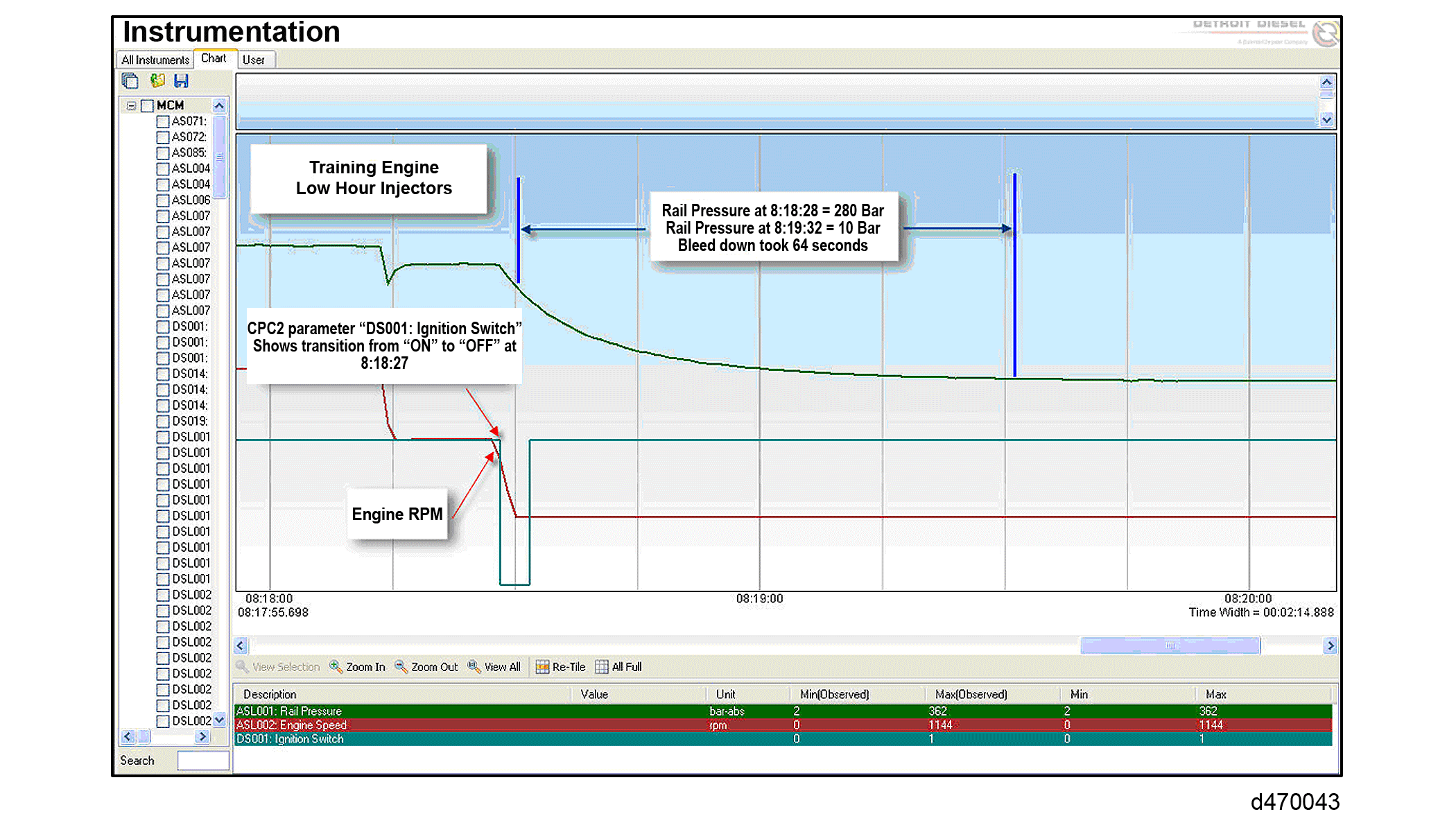Section 5.7
Rail Pressure Bleed Off
This procedure, the Rail Pressure Bleed Off (RPBO) test will allow a technician to identify a leak in the high pressure system. A leak in one of the following locations will show a fast bleed down rate over time.
- High pressure pump (pumping elements)
- Fuel lines from the high pressure pump to fuel rail
- Fuel lines to each injector
- Leak at the rail pressure sensor
- Leaking pressure limiting valve
- Internal amplifier or needle leakage to the return
- Internal amplifier or needle leakage to the cylinder
Section 5.7.1
RPBO Test Using DDDL
Test as follows:
- Install DDDL hardware.
- Start DDDL software.
- Go to “Instrumentation”, “Chart”, and select the parameter “Rail Pressure.”
- Start engine and bring to operating temperature (over 140°F/60°C).
- Turn engine OFF.
- When the engine has stopped, turn ignition ON (key ON, engine OFF). Do not start.
Note: Failure to turn the ignition back ON will cause the MCM to power down before completing the test.
- Monitor rail pressure trace over time.
- A normal sealed system should show the characteristics shown in the following illustration.

- Note the time at which rail pressure reaches 280 bar.
- Note the time at which rail pressure reaches 10 bar.
- Subtract the end time (10 bar) from the start time (280 bar). Use the following worksheet.
Time noted when rail pressure reads 10 bar _______________________________
Time noted when rail pressure reads 280 bar _______________________________
Bleed down rate__________________________
Example:
Time at 10 bar=8:19.32
8:19.32 – 8:18.28 = 0:01.04
Time at 280 bar=8:18.28
One minute four seconds or 64 seconds.
This engine passes a rail pressure bleed off test.
Table 1. Rail Pressure Bleed Off Worksheet
- A system that developed a leak in the high pressure system will show the following characteristics.

- Return to symptom based diagnostic routine.
| DD15 Fuel System Technician's Guide - DDC-SVC-MAN-0037 |
| Generated on 10-13-2008 |
exellent thanks